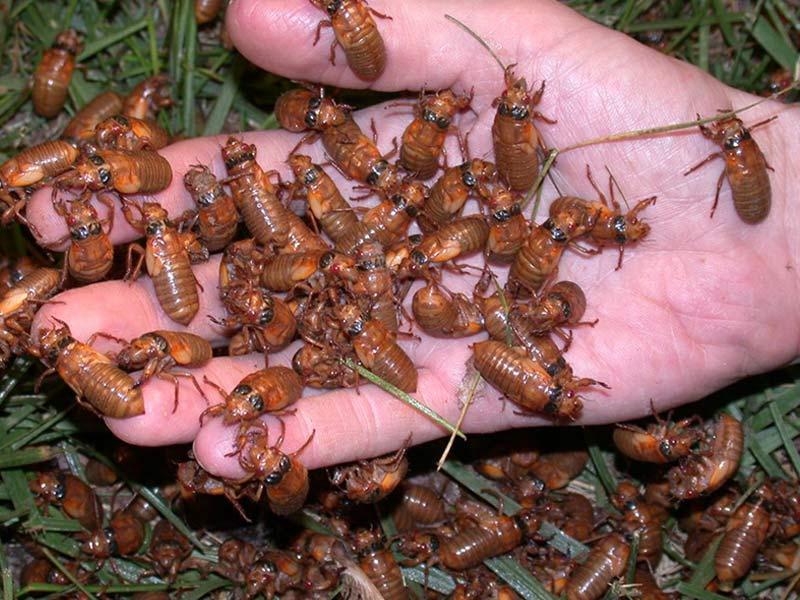Five fun facts about cicadas, a ‘biological phenomenon to be relished’
Keith Clay, professor in the Department of Ecology and Evolutionary Biology in the School of Science and Engineering at Tulane University, shared some fun facts about cicadas in advance of this year’s emergence, when two groups of cicadas, called Brood XIII and XIX, will emerge at the same time for the first time in 221 years.
1. There are many species of cicadas
“There are thousands of species of cicadas worldwide,” said Clay, “but the ones of interest, particularly now, are what we call periodical cicadas.” There are multiple species of periodical cicadas, which only occur in the eastern United States, that have lifespans of either 13 or 17 years.
“Each brood, which is really named on the timing of their emergence, actually consists of three different species of cicadas,” he added, “but they’re all coming out in synchrony with each other.”
2. They know when to emerge based on soil temperature
“They don’t emerge from the soil until the soil temperature reaches 64 degrees,” Clay said. “That’s the trigger for them to come out.” Within a few weeks of their scheduled emergence date, as soon as the soil temperature hits that fateful number, cicadas make their debut after spending most of their lives below ground.
Their flight and sound are also temperature-dependent. “They can’t fly unless they’re hot enough,” he said, “and they also can’t sing [KC5] unless the temperature is hot enough, although it’s not quite as hot as they need to fly.” He also noted that only male cicadas sing.
Clay recalls being in Indiana during the emergence of Brood X in 2021. “If the sun went behind a cloud and it suddenly got dimmer, the volume of the cicada song would drop dramatically. But as soon as the sun came back out, it would pick right up again.”
3. You probably won’t be overrun by twice as many cicadas as usual
The two broods that will emerge this year are based in different geographical areas. The brood on a 13-year cycle is more southern and the 17-year brood is more northern, with some overlap in the southern Midwest. “There is a potential that they could hybridize [or mate across species] with each other,” Clay said, “because they probably don’t know that they’re different species or on a different lifecycle.”
Cicadas within the same brood don’t tend to hybridize because they look different and have different mating songs. Because of how little different broods interact, however, researchers are curious about whether Brood XIII and Brood XIX will hybridize during this year’s emergence. Although the likelihood of hybridization of these broods is low because of how rare it is in general, there is another reason Clay thinks there might not be much of it. “The region where they’re both emerging at the same time is not prime cicada habitat,” he said. “Compared to other parts of the country, where you can hardly go anywhere without being bombarded by cicadas, I don’t think that will be the case in central Illinois.”
“Although, who knows?” he added. “It might be very exciting.”
4. They are not harmful to humans
“I think one common misconception is that they’re, you know, nasty and icky and you don’t want anything to do with them,” said Clay. In actuality, cicadas are not dangerous to humans or other animals. While aboveground, they do feed on sap from small branches, but that tends to be the extent of the damage they cause.
They also provide a food source for many animals while they are aboveground. “During that period, most animals in the forests stop whatever they’re doing and just chow down on cicadas,” Clay said.
5. The cicada emergence is a wonder to behold
“A lot of people see them as a biological phenomenon to be relished,” Clay said. He compared cicada broods emerging to the recent solar eclipse. “There are people that travel around the country, going to spots where the cicadas come out pretty much every year because there’s nothing like it.”

